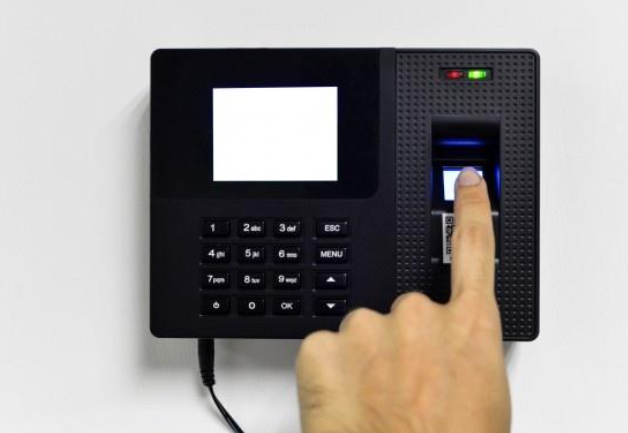Time has always been a crucial factor in the world of business. Employees clock in and out every day, and quests to find ways to maximize productivity run persistently. The need to track how much time is spent on different tasks is right there at the forefront. This is where the beauty of time and attendance software comes into play. More prevalent in today’s technologically equipped era. This software has revolutionized the way businesses monitor work schedules, enhancing productivity and streamlining administrative tasks. In this article, we will dive deep into the evolution and impact of time and attendance software,. It is modern-day innovations, its role in shaping the future of work schedules, and how to choose the right system for your business.
The Genesis of Time and Attendance Software:
Tracking time and attendance wasn’t always as efficient and fluid as it is today. The bygone era saw businesses relying on manual punch-in cards or a register that was susceptible to numerous inaccuracies, time theft, and buddy punching. Even with the advent of electronic time clocks in the mid-20th century, which offered a more accurate record, the system was not immune to errors and manipulation.
However, as we rolled into the digital era, companies started seeking better, more efficient means to track employee time and attendance. This need for advancement triggered the development of automated software, fitting perfectly with the dynamic shifts in work environments. Today, this software has become an indispensable tool in most corporate settings, contributing significantly to efficient workforce management.
The Leap into the Digital Era: Modern Innovations in Time and Attendance Software:
With manual time tracking becoming obsolete, businesses have been catapulted into the digital era with advanced, state-of-the-art time and attendance software. This shift has been monumental in transforming time management in the workplace. Instead of forwarding time entries from physical punch cards, modern systems offer real-time data tracking, enabling instantaneous and accurate workforce insights.
Modern time and attendance software may also be cloud-based, allowing remote access from any device, anytime, anywhere. This has broken down the barriers of a centralized work location, fitting seamlessly with the advent of remote working culture. Furthermore, the inclusion of features like mobile compatibility and biometric identification system adds another layer of convenience and security. With fingerprints, retina scans, or face recognition, businesses can further nullify the chances of time theft or proxy attendance.
Impact of Time and Attendance Software on Work Efficiency:
The benefits of adopting advanced time and attendance software transcend beyond just tracking employee hours. By providing specific data on work schedules, activities, and identifying areas of inefficiencies, these systems significantly boost work efficiency. With a clearer picture of the workflow, strategic schedules can be crafted to optimize productivity and rectify time-wasting habits.
Enterprises can actively monitor workload and allocate resources more accurately, resulting in improved manpower management. Accurate time tracking can also help identify and reward high-performing employees while denoting underperformers, helping elevate overall performance and employee morale. Let’s not forget the immense reduction in administrative tasks. By eliminating the necessity for manual data entry and computation, these systems free up significant time for HR personnel, enabling them to focus on core tasks that contribute to organizational success.
The Future of Work Schedules: The Role of Advanced Software and Big Data:
We now live in the big data era, where the ability to harness data is a game-changer. As time and attendance software become smarter, we’re likely to see more advanced features powered by Artificial Intelligence and machine learning algorithms. Predicting future staffing needs, recognizing patterns, identifying potential issues, and real-time problem-solving are poised to become standard features.
The growth in big data management capabilities will enable businesses to analyze and extract valuable insights from the immense volume of data that these systems generate. This could potentially unlock unparalleled levels of productivity and efficiency in managing work schedules and overall employee management. In the future, time and attendance software may even interact with other organizational tools, resulting in an integrated, efficient, and highly productive working environment.
Benefits of Adopting Advanced Time and Attendance Software:
Embracing advanced time and attendance software presents a multitude of benefits. First and foremost, such systems can drastically reduce payroll errors. By ensuring accurate clock-ins and clock-outs, businesses save money that may otherwise be lost due to inaccuracies or manipulations in manual time tracking. Besides, the technology also helps maintain compliance with labor laws by accurately recording overtime, breaks, leaves, etc., which are all critical for legal reporting and payroll.
One cannot ignore the fact that these systems reduce administrative workload – improving productivity and enhancing overall employee satisfaction. Employees too benefit from this technology as it brings transparency and fairness to the payroll process. They can track their working hours, leaves, overtime, etc., in real-time, which promotes a feeling of trust and fairness among employees.
Challenges in Implementing New Time and Attendance Systems:
While switching to advanced time and attendance software promises substantial benefits, businesses may still face some challenges during their transition phase. The change can present initial resistance from employees as they adapt to the new system. Equipping employees with the necessary training to use the new software is thus paramount.
Expenses associated with procuring and implementing the new software could also be a hindrance, particularly for small businesses. Organisations with multiple work locations may face technical issues in integrating the system across all locations. However, overcoming these obstacles is not insurmountable. Adequate training, taking small steps with the transition, seeking professional help, and considering your budget constraints can help ensure a smooth and successful implementation.
Choosing the Right Time and Attendance System for Your Business:
Choosing the right software is critical to harvest all the benefits discussed above effectively. Businesses should consider the nature of their industry, the size of the company, budget constraints, and specific needs while choosing a system. A restaurant, for example, may need a system with strong scheduling capabilities, whereas a remote-based IT firm would require a system with powerful remote tracking features.
The system should be user-friendly and offer easy integration with other existing systems like payroll, HRMS, etc. Future scalability is another crucial factor to consider. As the company grows, the system should be able to adapt and cater to the evolving needs. Also, consider the vendor’s reputation, customer support, and the system’s security features to safeguard your data.
Conclusion:
The future of efficient workforce management is here with advanced time and attendance software. It has already begun its journey of transforming work schedules and driving productivity forward. As the software continues to evolve, so too will the benefits it brings to businesses. With the ability to streamline tasks, boost productivity, save costs, and bring transparency, these systems are poised to become integral to organizations of all sizes. As we move towards a technologically dominated work environment, it is essential for businesses to embrace this innovation for a more productive and efficient future.












